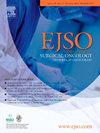A clinically applicable machine learning model for personalized survival prediction in metastatic pancreatic neuroendocrine tumors
IF 2.9
2区 医学
Q2 ONCOLOGY
引用次数: 0
Abstract
Introduction
Metastatic pancreatic neuroendocrine tumors (pNETs) carry a poor prognosis. Currently, no validated model exists to accurately predict survival in this population, highlighting the need for effective prognostic tools.
Materials and methods
In this study, we developed and validated a machine learning-based survival prediction model using data from the Surveillance, Epidemiology, and End Results (SEER) database. The model incorporated ten key prognostic factors, including AJCC TNM stage (T, N, M), tumor grade, primary surgery, non-primary site surgery, chemotherapy, primary site, age, and sex. The eXtreme Gradient Boosting (XGBoost) algorithm was applied to construct the model.
Results
A total of 1430 patients were included in the study. The XGBoost model showed strong predictive performance, with area under the receiver operating characteristic curve (AUROC) values of 0.781, 0.747, and 0.741 for 1-, 3-, and 5-year survival, respectively. The model was implemented in a web-based application that delivers real-time, individualized survival estimates to support clinical decision-making and personalized treatment planning.
Conclusion
By capturing complex interactions among prognostic variables, the model provides accurate survival predictions and supports patient-centered care. It addresses a critical gap in prognostic tools for metastatic pNETs.
转移性胰腺神经内分泌肿瘤个体化生存预测的临床应用机器学习模型
转移性胰腺神经内分泌肿瘤(pNETs)预后较差。目前,没有经过验证的模型可以准确预测这一人群的生存,因此需要有效的预后工具。材料和方法在本研究中,我们利用来自监测、流行病学和最终结果(SEER)数据库的数据开发并验证了基于机器学习的生存预测模型。该模型纳入了10个关键预后因素,包括AJCC TNM分期(T、N、M)、肿瘤分级、原发手术、非原发部位手术、化疗、原发部位、年龄和性别。采用极限梯度增强(XGBoost)算法构建模型。结果共纳入1430例患者。XGBoost模型表现出较强的预测性能,1年、3年和5年生存期的受试者工作特征曲线下面积(AUROC)分别为0.781、0.747和0.741。该模型在一个基于网络的应用程序中实现,该应用程序提供实时、个性化的生存估计,以支持临床决策和个性化的治疗计划。通过捕捉预后变量之间复杂的相互作用,该模型提供了准确的生存预测,并支持以患者为中心的护理。它解决了转移性pNETs预后工具的关键空白。
本文章由计算机程序翻译,如有差异,请以英文原文为准。
求助全文
约1分钟内获得全文
求助全文
来源期刊

Ejso
医学-外科
CiteScore
6.40
自引率
2.60%
发文量
1148
审稿时长
41 days
期刊介绍:
JSO - European Journal of Surgical Oncology ("the Journal of Cancer Surgery") is the Official Journal of the European Society of Surgical Oncology and BASO ~ the Association for Cancer Surgery.
The EJSO aims to advance surgical oncology research and practice through the publication of original research articles, review articles, editorials, debates and correspondence.
 求助内容:
求助内容: 应助结果提醒方式:
应助结果提醒方式:


